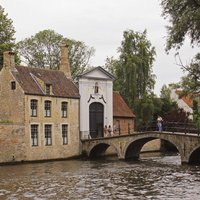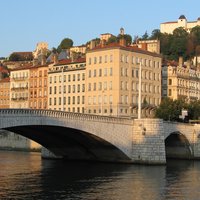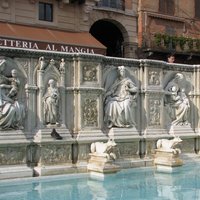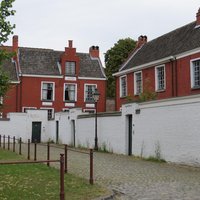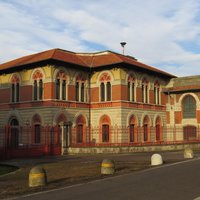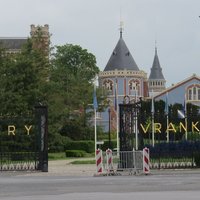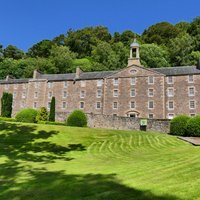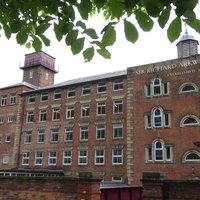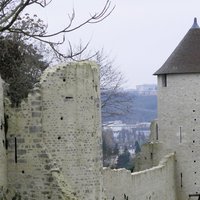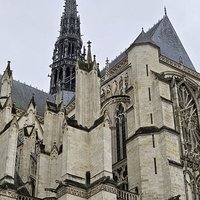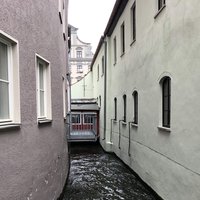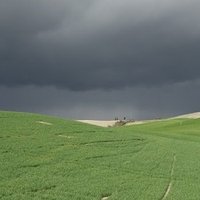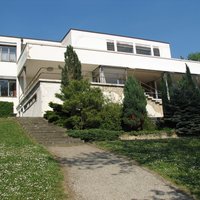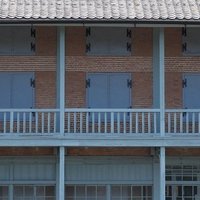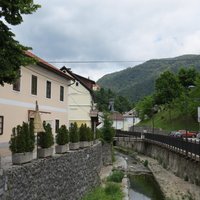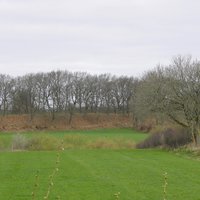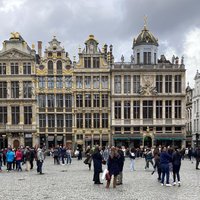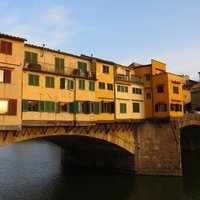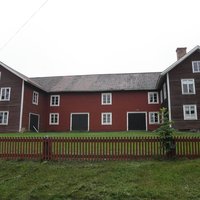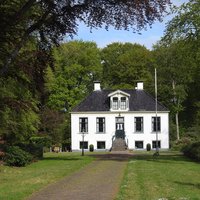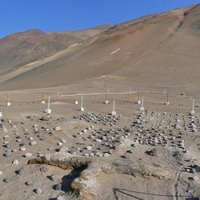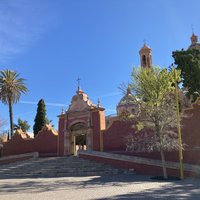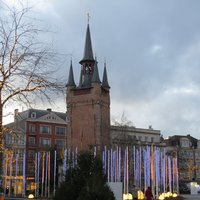Connected Sites
-
Cloth Hall
-
-
The Fontebranda fountain "was built in the 13th century by the Guild of the Wool-makers (Lana)." One of its uses was "to wash clothes, especially the textiles made by Arte della Lana (Guild of Wool-makers)".
See en.wikipedia.org
-
"In all cases, each [beguine] had to provide for her own keep, and many worked in the textile industry." (AB Ev) From the 17th century on, textile production was definitively abandoned in favour of the education of young girls. (Nomination file, p. 8) - The first Beguines in Bruges were, as elsewhere, girls of modest origin, who made a living by working in the cloth industry. Much water was needed to treat the cloth, so they settled near a watercourse.
See nl.wikipedia.org
-
Started by the textile manufacturer Cristoforo Benigno Crespi
-
Several Champagne houses were founded by textile merchants, e.g. Nicolas Ruinart, Philippe Clicquot et Florens Ludwig Heidsieck. (Nomination file, p. 194)
-
-
-
It bears witness to early developments in the organization of international trading fairs and the wool industry (UNESCO website)
-
The creation of wealth linked to the trade in drapery and woad explains why in the cathedral, the axial chapel of the Virgin was originally dedicated to "Our Lady the draper" (Notre-Dame drapière). (wiki fr)
-
Especially in the east of the city, numerous textile factories along the canals and water courses, so that Augsburg was also called the Manchester of Germany. (nom file)
-
The existence of fulling mills at Bagno Vignoni is documented from 1416. (Nomination file, p. 123)
-
Fritz Tugendhat owned a textile factory
-
"the first appearance in the country of the large functional and mechanised factory for the mass production of textiles" (AB ev)
-
-
Prehistoric Pile Dwellings
Austria, France, Germany, Italy, Slovenia, SwitzerlandInscribed: 201125817the oldest textiles in Europe dating to 3,000 BC come from the pile dwellings (AB ev) -
Sukiennice Cloth Hall
-
Idrija: The same routes used by mercury were also the trade routes for Idrijan lace, created by miners' wives from the 17th century onwards. (nom file)
-
The numerous pit houses in Hedeby probably served to process textiles during summer.
-
House No 2 (Den Cruywagen / La Brouette) was the house of the guild of the greasers and of the clothes dealers. The House at Nos 24-25, also called "De Gulden Boot / Maison de la Chaloupe d'Or" is the house of the guild of the tailors. (Nomination file, p. 16, 48) (Wikipedia)
-
"Palazzo dell' Arte della Lana" was the guildhall of the Florentine wool merchants
-
Linen : The wealth of Hälsingland derived to a significant degree from the growing of flax and the production of linen. An earlier version of the nomination included a flax mill and the Gästgivars farmhouse contains a "flax barn". The nomination file contains an entire section titled "Linen production" and includes the following - "The processing of the flax into finished textiles was performed at home on the Hälsingland farms".
-
Lace
-
At its inception, the Colonies project was essentially agricultural, but soon introduced a variety of supplementary industries, such as cotton weaving, to generate income. By 1841, it was the second-largest exporter of cotton cloth to the Dutch East Indies colony. (Nomination file, p. 84)
-
In river mouth environments, an important diversity of species emerges when there is good irrigation, forming wetland areas locally known as chimbas. In these wetlands, abundant swordgrass and southern cattails can be found, the main components of diverse Chinchorro textiles. The characteristics of these wetlands can still be seen today (...) in Camarones, in areas that have suffered little intervention and are closely associated with the remains of the Chinchorro occupation. (Chinchorro Culture Nomination Text, p. 91)
-
Ojuelos - 19th century wool textile buildings (AB ev)
-
-
13 spindle whorls and 67 loom weights, all made of ceramic, were found in "a Late Talayotic dwelling at the Torre d'en Galmés settlement (Component C7), known as circle 7". "From this and other finds, we can conclude that spinning and weaving tasks are rather well documented in Menorca during the Late Talayotic period. However, the technology used for such processes during earlier periods remains unknown (...)." (Nomination file, p. 274-275)

